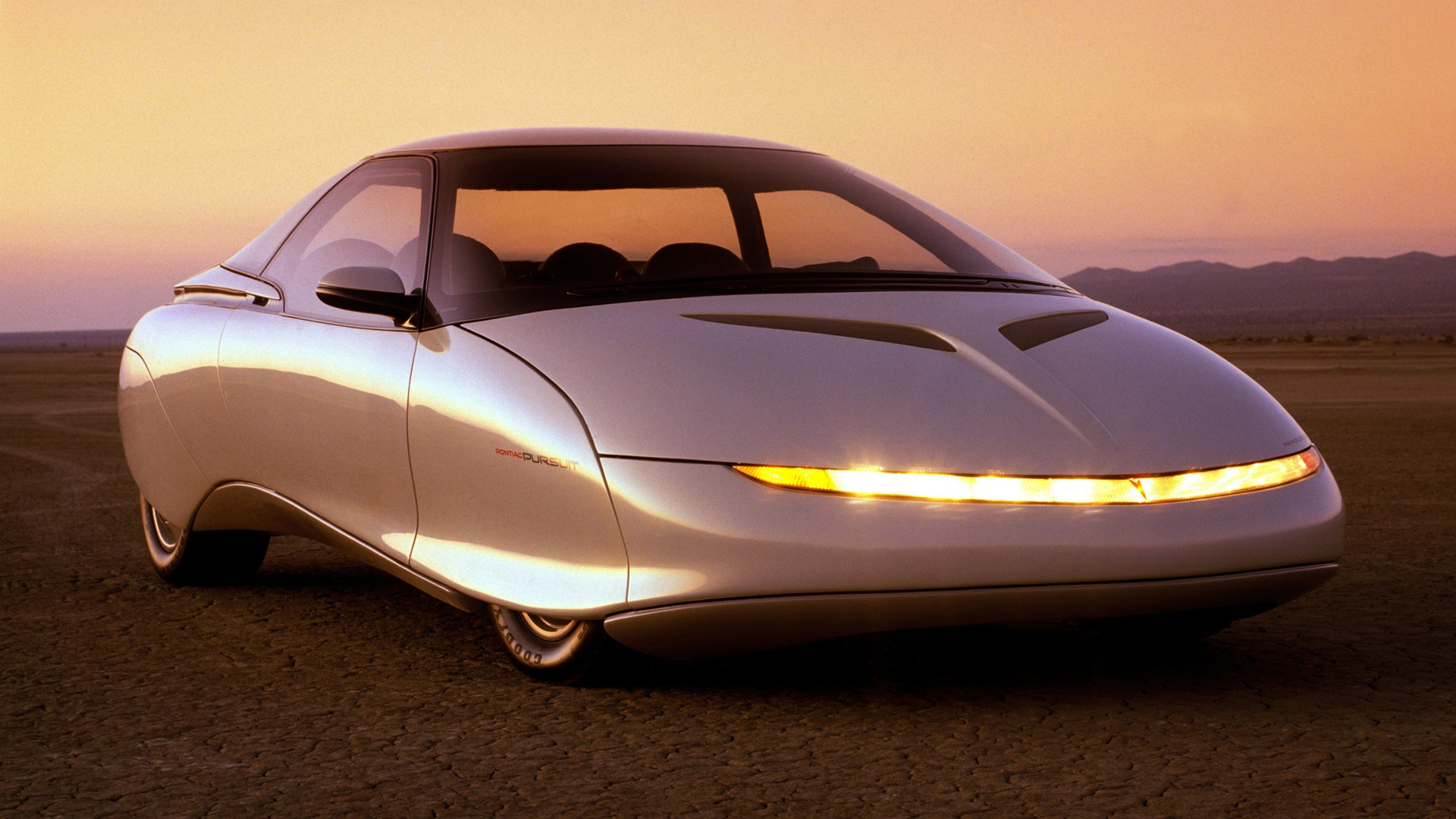

If GM’s brands all made vehicles based on their concepts from the Eighties, their future would’ve been bright. They would all be out of business, but it would’ve been great. Oldsmobile’s Incas concept was an Italian-styled wedge with no conventional doors, and a Jetsons-style cockpit. Buick’s 1985 Wildcat concept was much of the same. Pontiac finally got their chance to show its dreams for the next millennium with the 1987 Pursuit.
The Pursuit concept was powered by a 2.0-liter turbocharged four-cylinder engine. It made 200 horsepower, and sent all of it to the front wheels via a five-speed manual transmission. Yes, even in the future, Pontiac’s cars had manual transmissions. But fittingly, Pontiac also loaded the Pursuit with advanced features—many of them actually functional, and many of which are just arriving in cars today. For instance, it had four-wheel steering that was completely electronic. It also had realtime weather and plans for pre-GPS satellite-based location updates in the in-dash infotainment system, which wasn’t even a word back then.

The steering wheel—similar to the Oldsmobile Incas’—was more a yoke. It was only 180 degrees lock-to-lock, making it extremely tight. Combine this with the complete utter lack of feel due to the nonexistent steering column and it was very awkward to drive. We know this because GM actually let Motorweek drive it in the eighties:

The intro to that video is awesome. So Eighties. Why did we ever leave that decade? Look at Craig Singhaus’ smirk as he says, “The year 2000.” The mustache, the glasses, the haircut, it all just adds up very nicely.
Steer-by-wire finally arrived in the 2014 Infiniti Q50 a few years ago, but that car still has a physical column as a backup. Besides the Q50, Infiniti has also added the system to the Q60 coupe and the QX50 crossover as an option. Other automakers have yet to adopt the system.
Another interesting feature was the car’s integrated child seat. All you had to do was fold it out of one of the rear seat backs, and it was ready to go. This is another feature that would make it to production—not in a Pontiac, but in Oldsmobile’s ‘Dustbuster’ minivan. Volvo also uses a similar system to this day.
The Pursuit, in the end, was just a technology demonstrator. The most real-world use it ever got was a brief cameo in the second Back to the Future movie before likely getting crushed like most concepts and prototypes. Though if you squint, you can make out hints of the GM EV1’s roofline in this design—and despite what you’ve heard, a few of those still survive.


Correction: Wednesday, May 13, 2020 9:02 pm ET: A previous version of this story mistakenly labeled GM’s ambitious idea for satellite-based location updates as “GPS.” In reality, the Global Positioning System didn’t reach fully operational status until 1995 and wasn’t made widely available to civilians until 2000. The relevant text has been updated.
Got a tip? Send us a note: tips@thedrive.com